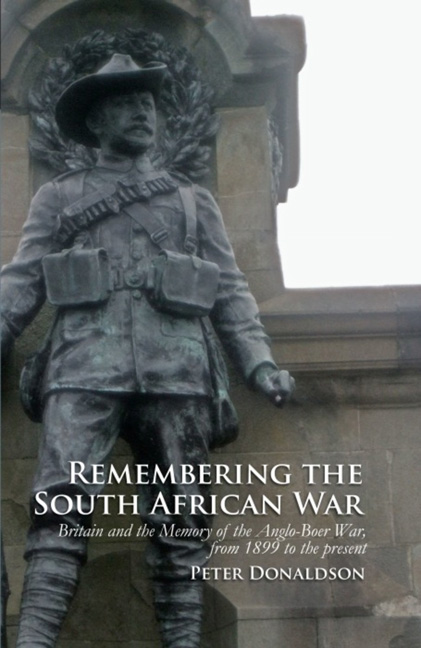 Remembering the South African War
Remembering the South African War Book contents
- Frontmatter
- Dedication
- Contents
- List of Illustrations
- Acknowledgements
- Introduction
- 1 Civic War Memorials: Public Pride and Private Grief
- 2 Pro Patria Mori: Remembering the Regiment
- 3 Vitai Lampada: Remembering the War in Schools
- 4 Alternative Affiliations: Remembering the War in Families, Workplaces and Places of Worship
- 5 Writing the Anglo-Boer War: Leo Amery, Frederick Maurice and the History of the South African War
- 6 Filming the War: Television, Kenneth Griffith and the Boer War
- Conclusion
- Bibliography
- Index
4 - Alternative Affiliations: Remembering the War in Families, Workplaces and Places of Worship
- Frontmatter
- Dedication
- Contents
- List of Illustrations
- Acknowledgements
- Introduction
- 1 Civic War Memorials: Public Pride and Private Grief
- 2 Pro Patria Mori: Remembering the Regiment
- 3 Vitai Lampada: Remembering the War in Schools
- 4 Alternative Affiliations: Remembering the War in Families, Workplaces and Places of Worship
- 5 Writing the Anglo-Boer War: Leo Amery, Frederick Maurice and the History of the South African War
- 6 Filming the War: Television, Kenneth Griffith and the Boer War
- Conclusion
- Bibliography
- Index
Summary
ALTHOUGH the nineteenth century was a period of change in memorialisation practice with a move towards the democratisation of the process occurring, the celebration of the individual remained at the heart of commemorative activity throughout this period. Yet, with the volunteer movement of 1899–1902 playing such a prominent role in the public imagery of the army, the South African War was, undoubtedly, a crucial stimulus for civilian organisations to celebrate the contributions of their members to the collective war effort. Thus, at every level of society where people shared a common identity or could perceive a unifying bond, communities were eager to raise monuments to their war dead and to honour those who served.
Memorials to Individuals
The bonds of kinship were, and are, for most people the ties that most firmly connect them to others and, therefore, it should come as no surprise that memorials in honour of individuals were by far the most common commemorative sites constructed during and in the immediate aftermath of the South African War. Where raised by members of the fallen's immediate family, these sites were relatively straightforward both in terms of design and purpose. Typical was the memorial window in St Oswald's Church, Malpas, in honour of Lieutenant George Lockhart of the Shropshire Company Imperial Yeomanry. Commissioned by his parents and siblings and designed by the renowned stained glass artist, Charles Eamer Kempe, the figurative representations of Bravery, Duty, Love and Faith in the lower lights of the window presented a comforting message of martial prowess underscored by Christian virtues. Memorial tablets or panels were also considered particularly apt for the commemoration of individuals. An especially fine memorial plaque was the centre-piece of the Bertie Moeller memorial at his parish church of St Peter, Belsize Park, London. Moeller, an Honourable Artillery Company man, was commemorated by his father who commissioned the tablet as part of an impressive improvement scheme to the church which included a chancel screen and steps in marble and that most Victorian of funerary materials, alabaster. That these types of memorials were largely the preserve of the affluent is shown by the Lockharts's ability to secure the services of such a highly fashionable and exclusive artist as Kempe and by Moeller's address in a well-to-do London suburb and his membership of the socially elite Honourable Artillery Company.
- Type
- Chapter
- Information
- Remembering the South African WarBritain and the Memory of the Anglo-Boer War, from 1899 to the Present, pp. 106 - 131Publisher: Liverpool University PressPrint publication year: 2013
